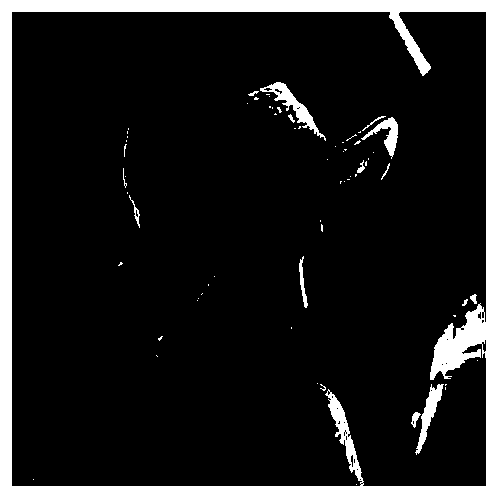A Digital Image Encryption Method Based on Chen System and Cellular Automata
An encryption method and digital image technology, applied in image data processing, image data processing, instruments, etc., can solve the problems of low security and poor test effect, and achieve the effect of high security and good encryption effect
- Summary
- Abstract
- Description
- Claims
- Application Information
AI Technical Summary
Problems solved by technology
Method used
Image
Examples
Embodiment 1
[0031] Embodiment 1: Evaluate the validity of this method
[0032] Digital images in BMP format such as Lena, peppers, and baboon are selected for testing and analysis. The sizes of the above images are all 512*512 pixels. The test environment is: CPU: Intel Core 3.4GHz; memory: 8GB; hard disk: 240GB; operating system: Windows 7 Ultimate; compilation environment: Visual Studio 2010, OpenCV 2.4; programming language: C++; the specific steps are as follows:
[0033] Step 1: Use the Logistic map to input the first three secret keys key1, key2, key3 to generate three random real number sequences rla, gla, bla, whose length is N*N, where N is the height and width of the image. The three sequences rla, gla, bla are further quantized into integer random sequences qrla, qgla, qbla in the range [0,255].
[0034] Step 2: Calculate the value of each random sequence number of updates. The calculation formula is shown in formula (6):
[0035]
[0036] Where total_r total_g total_b...
Embodiment 2
[0051] Example 2: Taking the histogram as an example to analyze the encryption effect
[0052] An important indicator to measure the performance of an encryption algorithm is the histogram. The histogram reflects the distribution of pixels in an image. Since the plaintext usually has a certain degree of intelligibility, its histogram cannot be evenly distributed, and it often presents some kind of volatility. For the ciphertext, it is usually not necessary to be intelligible, and the information of the plaintext needs to be effectively hidden, so the histogram of the ciphertext often has the characteristics of uniform distribution. This makes it impossible for attackers to obtain effective information from the histogram of the image.
Embodiment 3
[0053] Embodiment 3: Taking the correlation coefficient as an example to analyze the method
[0054] The correlation coefficient of plaintext images is usually very high, that is, adjacent pixels usually have very similar pixel values. A good encryption algorithm should be able to significantly reduce the correlation of adjacent pixels in the ciphertext, making the correlation coefficient close to 0. Table 1 lists the correlation coefficient of the ciphertext obtained after encrypting the lena graph as the plaintext.
[0055] Table 1 Correlation coefficient analysis
[0056]
PUM
 Login to View More
Login to View More Abstract
Description
Claims
Application Information
 Login to View More
Login to View More - R&D
- Intellectual Property
- Life Sciences
- Materials
- Tech Scout
- Unparalleled Data Quality
- Higher Quality Content
- 60% Fewer Hallucinations
Browse by: Latest US Patents, China's latest patents, Technical Efficacy Thesaurus, Application Domain, Technology Topic, Popular Technical Reports.
© 2025 PatSnap. All rights reserved.Legal|Privacy policy|Modern Slavery Act Transparency Statement|Sitemap|About US| Contact US: help@patsnap.com



